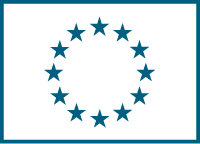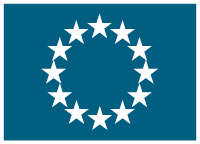Demonstrating the introduction of novel renewable Polyurethane materials for high quality, top design and sustainable shoes
(GREEN FOOTPRINT)
Date du début: 1 janv. 2009,
Date de fin: 31 déc. 2011
PROJET
TERMINÉ
Background
Shoe manufacturing processes often use polyurethane materials because they are lightweight, versatile, and provide good technical performance. Polyurethane originates from the isocyanates and polyols that are produced by the petrol-chemical sector. The Green Footprint project was developed to demonstrate the commercial potential of an innovative polyurethane system that could successfully introduce renewable raw materials into the manufacturing process for shoe soles.
Objectives
The Green Footprint project aimed to demonstrate the technical feasibility and economical viability of integrating 20-25% of renewable bio-based Natural Oil Polyols (NOPs) into the shoe sole manufacturing process (at pilot and at pre-industrial scale). It would also clarify the opportunities for using novel NOPs to reach substantially higher quality bio-based polyurethane while increasing the share of renewables. A target was set to achieve a potential 20-25% reduction in fossil resource usage for specific footwear products. Other targets included reducing energy consumption needs in the polyurethane production process by 13% and decreasing the carbon footprint of high quality polyurethane by 700 tonnes of CO2 per tonne of polyurethane.
Results
Small scale (laboratory scale), medium scale (pilot plant) and full scale (industrial plant) tests were carried out during the projectâs timeframe. A Life Cycle Analysis was implemented to quantify the projectâs achievements and a market evaluation helped to confirm the anticipated satisfaction by footwear companies of the new products.
By using Azelaic acid in the polyurethane production system, the project was able to exceed its target and demonstrate that up to 35% of the raw materials used, could be provided from sustainable sources.
This represents a 30% reduction in fossil resource use during the manufacturing of high quality polyurethane and a 22% reduction in energy inputs. Outcomes demonstrate the possibility for reducing the carbon footprint of high quality polyurethane production by 5 300 tonnes of CO2 per tonne of polyurethane.
These results represent important achievements in terms of identifying new opportunities for reducing energy inputs and the carbon footprint of European shoe manufacturing processes.
The product has been successfully launched into the market and now is part of the product portfolio of The Dow Chemical Company under the sustainable product family name of Voralast Râ¢. This product is expected to perform well as a competitive alternative to other polyurethane options due to several key advantages. Firstly its lightweight means it is suitable for the production of sandals, slippers and midsoles for sport shoes. Secondly, its toughness provides comfort and excellent wear, delivering robust durability and flexibility required by âCasualâ and âSneakerâ market segments. Thirdly, it is oil and solvent resistant so remains a good optionfor âSafety shoeâ market segments.
The replicability of the technical solution in various sectors other than polyurethanes has been investigated. Analysis here demonstrated a potential use of the renewable Azelaic based polyesters in substitution of the Adipic acid. Product categories investigated are: flexible polyurethane foams (pillows, mattresses, foam sheets to be cut or preformed for various coating applications, chairs, seats, automotive seats and equipment, armchairs and generally furniture goods), adhesive and sealants, elastomers (main applications in the automotive industry), coatings (varnishes and coating layers for liquid barrier between layers of different materials) and polyamide 69 (to be used in substitution of nylon 66, the synthetic fibre used mainly in textiles for wear).
Further information on the project can be found in the project's layman report (see "Read more" section).




